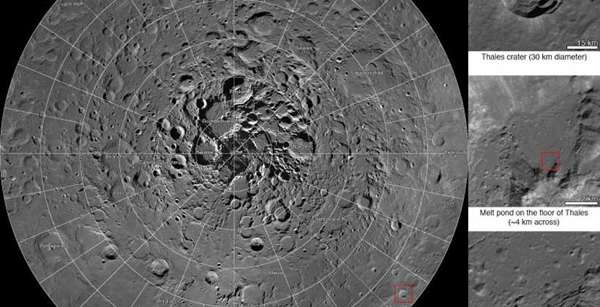NASA scientists using cameras aboard the US space agency’s Lunar Reconnaissance Orbiter (LRO), have created the largest high-resolution mosaic of our moon’s north polar region.
The images making up the interactive mosaic were taken by the two LRO Narrow Angle Cameras, which are part of the instrument suite known as the Lunar Reconnaissance Orbiter Camera (LROC). The cameras on board the orbiter can record a tremendous, dynamic range of lit and shadowed areas.
The detail of the picture is nothing short of immense as the entire image measures 931,070 pixels square – nearly 867bn pixels total.
“Creation of this giant mosaic took four years and a huge team effort across the LRO project,” said Mark Robinson, principal investigator for the Lunar Reconnaissance Orbiter Camera at Arizona State University.
“We now have a nearly uniform map to unravel key science questions and find the best landing spots for future exploration,” Robinson said.
The agency said if the complete mosaic were processed as a single file, it would require approximately 3.3 terabytes of storage space.
Therefore, the processed mosaic was divided into millions of small, compressed files, making it manageable for users to view and navigate around the image using a web browser, it added.
The LRO, which entered lunar orbit in June 2009, was equipped with seven instrument suites to map the surface, probe the radiation environment, investigate water and key mineral resources, and gather geological clues about the moon’s evolution.
Agencies/Canadajournal
 Canada Journal – News of the World Articles and videos to bring you the biggest Canadian news stories from across the country every day
Canada Journal – News of the World Articles and videos to bring you the biggest Canadian news stories from across the country every day



